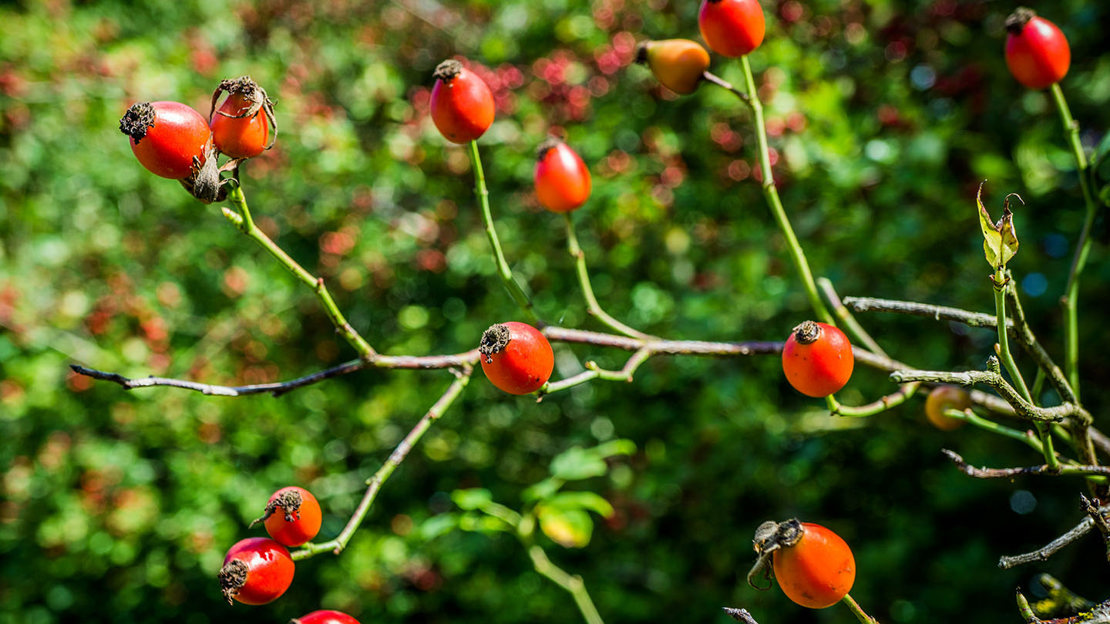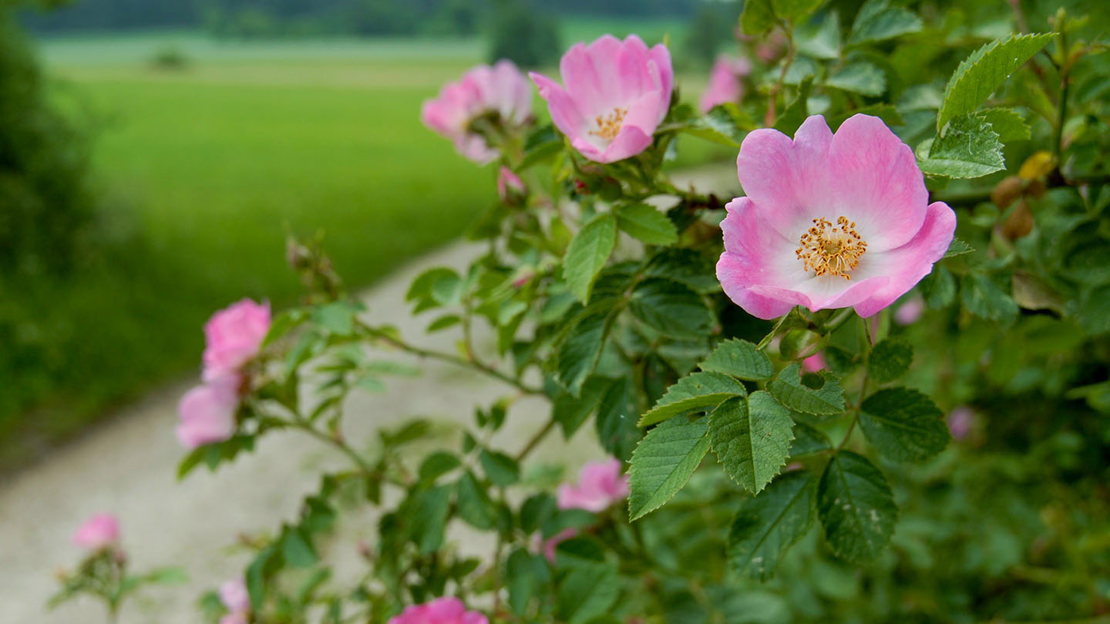Give back to nature
Experiment with your foraged finds in style. Every purchase from our kitchen and dining range helps fund our vital work to plant and protect trees and woods across the UK.
Shop now
PR & communications officer - Scotland
We have been enjoying the benefits of rosehips for centuries, but they really became popular during World War II when fresh produce was scarce. Here are our tips for finding and cooking up these surprisingly tasty fruits.
Traditionally the hips are boiled with sugar and water, but I prefer this ‘raw’ syrup for maximum goodness and flavour. It is like the best Turkish delight you ever had, crossed with the tang of tropical fruits like mango and lychee. What a treat this must have been at a time of scarcity.

The syrup will easily keep well in the fridge if unopened. It will lose flavour and vitamin potency as time goes by though, so it’s a good idea to use your autumn batch before spring comes around. If you have any doubts don’t consume it. Trust your nose, and leave it if it has begun to ferment.
The syrup can be taken by the spoonful like medicine – but medicine which tastes fantastic! It makes a pleasant drink diluted in water, or used as an ingredient in alcoholic cocktails. Try using it in a hedgerow mojito with white rum and soda water over ice. Or serve it like maple syrup on pancakes, waffles, rice pudding, yoghurt or ice cream.

Rosehips are produced by all sorts of rose bushes but the common dog rose (Rosa canina) makes the best syrup. It’s abundant in the countryside, growing in woods, copses, scrub and hedges throughout Britain, up to altitudes of 550 metres.
Around towns you might also encounter hedgehog rose (Rosa rugosa) which is often planted for hedging. It has larger hips and is fine to use for syrup too.
The striking red oval shaped hips form in small clusters and ripen around September and October.

During the war, government scientists realised that, weight for weight, rosehips have over 20 times the vitamin C of oranges. So the Ministry of Food recommended rosehip syrup and a generation of children began receiving a daily dose.
During World War II, a national week for the collection of rosehips was established in late September. Scouts, guides and other groups would head out to harvest the nation’s hedgerows. In 1941 this produced a 200 ton haul of hips which made 600,000 bottles of commercially produced syrup!
With the growing popularity of foraging, the vitamin saviour of World War II has been making a welcome comeback.
As well as vitamin C, rosehips are a great source of vitamin A, D and E. They contain an anti-inflammatory and have been shown to help relieve the symptoms of arthritis.
Experiment with your foraged finds in style. Every purchase from our kitchen and dining range helps fund our vital work to plant and protect trees and woods across the UK.
Shop now